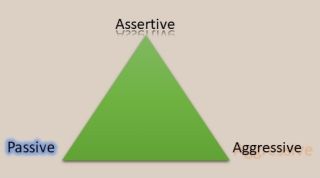Cognitive Behavioral Therapy
How Cognitive Behavioral Therapy Tackles Communication
Saying what you mean, assertively.
Posted March 2, 2023 Reviewed by Michelle Quirk
Key points
- Assertive communication can be hard, but it can be learned.
- What is and is not assertive varies by context.
- Helping someone learn to communicate better can be key to them feeling less depressed and anxious.
Communication is one of the major skills covered in cognitive behavioral therapy. Although therapy is often with an individual, relationship problems are a common focus of treatment. Helping someone learn to communicate better can be key to them feeling less depressed and anxious. Helping people learn to communicate assertively and recognize types of communication in others is one of the key behavioral skills in cognitive behavioral therapy.

3 Types of Communication
Let’s start with the three types of communication. First is assertive, which is respectful of both people and is clear, direct, and honest. Next is passive, which ignores the speaker’s needs in favor of the listener’s needs. Passive communication is often not honest or direct as the person communicating does not state their needs and might even deny their own needs in favor of the other person getting what they want. Aggressive communication ignores the listener’s needs in favor of the speaker’s needs, and, while it can be honest and direct for the speaker, it comes at a cost for the listener.
These types of communication can be put on a triangle, like in the picture below. What a person says or does can be anywhere on the edge of the triangle. Something a person says could be perfectly assertive. Another statement could be part assertive and part aggressive. And there is the classic passive-aggressive communication (bottom of the triangle) where someone is passively or indirectly communicating an insult or other negative statement toward someone else.
This is pretty abstract, so let’s take an example. A person is asking their roommate to text them before they bring someone else to the apartment. Here are some examples of how they would communicate in each type.

- Passive: “It’s fine that you brought Jenny over.” The want or need to be notified beforehand is not communicated.
- Aggressive: “You are so thoughtless! Can’t you text before you bring Jenny over here?”
- Assertive: “Could you let me know before you have friends over?”
Communicating Assertively
In cognitive behavioral therapy, we will often work with people to change their communication style to be more assertive. Some people start off more passive and some start off aggressive. Assertive communication can help both the client and the people in their lives feel better, and this communication type makes it more likely that everyone will get their needs met. Even if someone does not get what they want, communicating needs and wants assertively often leaves the person feeling better than if they had been passive or aggressive.
Whether a specific statement is passive, aggressive, or assertive can depend on context and the relationship. For example, being silent (not saying anything) can be passive, assertive, or aggressive. Being silent can be passive when a person wants to say something but doesn’t. It can be aggressive when another person clearly wants a response (such as asking a question), and the silence is used to punish the other person. But not saying anything can be assertive, such as when someone else insults you. The context can also determine whether assertive communication is appropriate. As an example, something that is assertive with friends and family might not be helpful in some workplaces.
Helping someone communicate more assertively is more complicated than just teaching them what to say. Often, other people communicate passively or aggressively and this could be frustrating for the client. Cognitive therapy could be used to examine what thoughts are triggered when someone else communicates passively or aggressively. For example, a person might think “She’s so dishonest” if a friend is communicating passively, and this leads the client to communicate aggressively. In cognitive therapy, we would help the person examine that belief and come up with realistic alternatives such as “She could be afraid to ask for what she wants.” The reframing makes it easier for the client to then use assertive communication instead of aggressive communication.
Cognitive therapy can also be helpful for taking down internal barriers to communicating assertively. People who tend to communicate passively sometimes believe they do not deserve to even ask for what they want. Cognitive therapy can be helpful in challenging this assumption. People who tend to communicate aggressively sometimes believe they will not get their needs met without aggression, or they may feel entitled to others’ time and energy. Again, cognitive therapy can be used to challenge these assumptions and help the person communicate assertively.
Assertive communication skills are an important part of the behavioral side of cognitive behavioral therapy. Challenging beliefs and assumptions that block assertive communication are a key part of the cognitive side of cognitive behavioral therapy. Good communication is key to happy relationships and helping clients achieve their goals in therapy.


